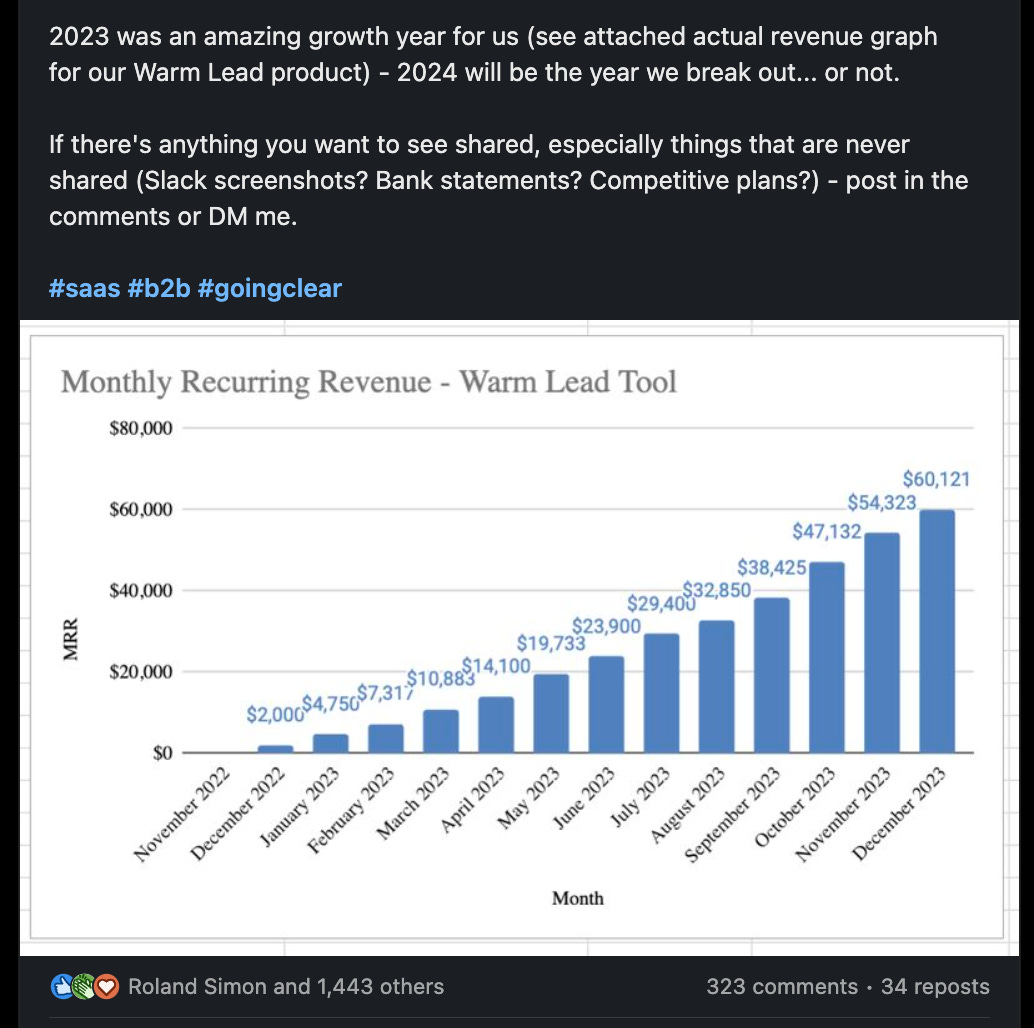Every Startup Needs Founder-Led Marketing
When Mark Zuckerberg starts posting homemade videos on his couch answering questions about Quest on Twitter, the world goes on notice. This is a great example of founder-led marketing.
Truthfully, this strategy is something that various startups, especially B2B SaaS, have been employing for the past few years in droves.
Founder-led marketing is the concept of a startup’s founder sharing content on their social profiles with the goal of driving revenue. I’ve personally seen it skyrocket in the last year on X, with founders sharing struggles, triumphs, and very personal accounts of their startup using the hashtag #buildinpublic.
How can your startup take advantage of this marketing strategy? I’m glad you asked. Let’s dive in.
Starting with some case studies
Founders have historically been hidden behind the curtain. Once in a blue moon, they’d speak at a conference or have a blurb in an article that the PR team would put together. But that was then. This is now. We now have founders who are willing to get down and dirty and tell you everything.
To inspire you on this concept, I’ve identified a few founders that are executing this to perfection.
First up, we’ve got Max Greenwald, the founder of YC-backed Warmly, who I got the chance to chat with. He’s amassed a following of 20,000+ on LinkedIn, by posting authentic stories, which often include financials – information that’s typically private.
Max announces being even more transparent in 2024 with his social posts.
Max shares monthly revenue growth. This post received 1,000+ likes.
When I asked Max why he’s spending so much time on founder-led marketing, this is what he had to say:
“A founder's most important role is to solve the biggest problem in the company at any given time. After you solve PMF (0 to $250k ARR) you need to build a repeatable sales motion ($250k to $1M ARR). Now that Warmly is past $1M ARR our founders have turned to the next big piece of the puzzle: generating inbound from marketing, hence founder-marketing strategy.”
So, in other words, Max is spending more of his time with founder-led marketing now that his startup has passed the product-market-fit stage.
Another prime example would be the CEO of Retention.com, Adam Robinson, who has amassed a following of 70,000+ on LinkedIn. Similar to Max, he also brings a truthful perspective to his startup’s struggles through text and video posts.
Adam Robinson shares a harsh truth about his Glassdoor company rating.
Being relatable and sharing the struggles of building a startup, is often what appeals to the masses - as can be seen with the likes on his recent post.
This strategy also very much works for B2C startups, and I’ve seen many startups find success with this on TikTok. If you have a fun or unique offering, this strategy works even better, like with DrainFunnel - a bathtub clog prevention product. Their founder regularly posts videos on TikTok demonstrating the product, answering questions, and posting funny videos. These videos work well because the founder follows TikTok trends, engages with the community and keeps the videos exciting. Kudos for making clog prevention entertaining to watch.
DrainFunnel’s founder-led TikTok page.
Founder-led marketing content types
The biggest mistake I see with this strategy however, are the founders who are overly promotional. Consumers simply don’t want to be sold to. Aim to provide 90% value and only promote 10% of the time. Now that we’ve got that out of the way, we can discuss a foundational framework for getting started.
When thinking about the type of content to post, I’d advise on focusing on the people you’re aiming to reach. For example, if you’re the founder of a SaaS social media tool, you’re most likely aiming to reach social media teams and other founders in the B2B space. Identify your ideal customer profiles and speak to them in your posts; what would they find valuable?
To help guide your thinking on the types of content you can post, this is what I’ve seen most successful on social media:
Latest startup wins
Startup stories (what happened that day/week)
Tips for scaling to certain milestones
Startup struggles
A question & answer session
Sharing startup testimonials
Financial updates
If you can share screenshots of financials (or typically private information), this will only help boost your posts further. In other words, the more transparent you are, the more eyeballs you’ll get.
Getting help with content
Founders are busy folks who are often focused on driving revenue for their startup, especially in the earlier stages. If you associate founder-led marketing with increasing revenue, it will be much easier to stomach the time you’ll spend doing this.
Assuming you’ll need some extra help, below are some of the top resources to help you post consistently on social media as a founder.
Leaning on your marketing team
As this is very much a marketing tactic, who better than your marketing team to help with content ideas and strategizing? Holding a bi-weekly sync can spark new ideas, if this is what’s taking up a good portion of your time. I will say from personal experience, once you get into the groove of posting regularly, the content will be easier to come up with.
Having an assistant help
This is my favorite, because an assistant can do the pre-and post-work to save you 50% of time, and it keeps you at the center of posting. The pre-work includes items such as content research and ideation, while the post-work focuses on scheduling content and monitoring comments.
Ghostwriters
I don’t recommend this, but it’s a last resort if you have absolutely zero time in the day to add this to your plate. There are various agencies that specialize in founder-led ghostwriting content production. They can help lift you off the ground or cover during busy times, or even when you go on vacation. But in my opinion, this resource takes away from the founder’s touch and the goal of being closer to the community you’re posting for.
I’m confident that in the coming years, we’ll continue to see momentum build for this strategy, as a way to drive startup revenue. People want to hear from other people and not brand profiles.
The last item I’ll leave you with, is what got me intrigued in writing this piece in the first place:
Airbnb posted about their 2023 Winter Release and Brian Chesky (founder) posted the same video. The difference in reach between the two posts is striking.
Stat comparison between the same social post on Airbnb and founder Brian Chesky’s account.
My biggest recommendation for all startup founders is to add this strategy to the list of items in your day-to-day. You won’t regret it.








